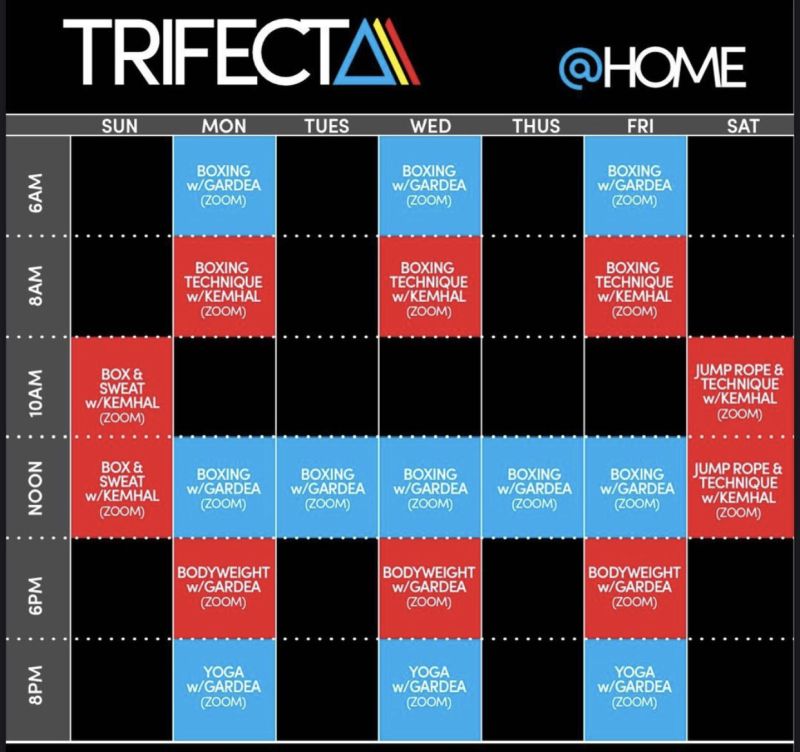![]()



If you’re just getting into working out and you’re not sure where to start or if you’re wondering whether your current exercise schedule is a good one, I’m going to be covering that in our blog this week. When it comes to scheduling workouts, there’s obviously not one schedule that will work for everyone. So let me state the obvious: your schedule will look different depending on your goals, your current fitness level, and how much time you have. But there are some general tips to follow that can apply to your average beginner/intermediate exerciser. A competitive or pro athlete, or someone training for a marathon, for example, will have a very different routine.
A key to setting your schedule is balance. How many days you work out vs. take off depends, but generally, exercising 4-5 days a week is ideal. Consistency is key. Sometimes people get a little overzealous, try to fit in 7 hard workouts for a few weeks, and then burn out. So finding what works for you—what pushes you, but also isn’t impossible to maintain over longer periods of time—is best.
Fitting in rest days during the week (I’d recommend 2 rest days during the week) is also a necessity. Rest days don’t always mean you have to be sedentary, either. Sometimes, active rest days like going for walks or doing gentle yoga is more beneficial. But it’s important to remember that recovery is as important as working out.
When it comes to exercise, variety is key. Ideally, we would all have time for cardio, resistance training, flexibility/mobility training, and recovery. So adding a little time to stretch after each workout is a great way to make sure you’re not neglecting flexibility/mobility work. If you’re doing both strength training and cardio, then your week would probably consist of 3 days of strength training and 2-3 days of cardio. Switching things up also means that you can switch up what types of exercises you do. Not only will you avoid boredom, but you’ll also be able to work out parts of your body in different ways.
With strength training, you’ll need to think about how you want to split up the exercises because the body needs time to repair in order to build muscle. If you’re only designating 3 days for strength training, total-body workouts are probably the best use of your time. If you can commit 4 or more days a week to it, you can split up the days however you like. You can split your days by muscle groups, push vs. pull days, etc.
In terms of how long each workout should be, for strength training days, 40-60 minutes is average, not including rolling out or warming up before/after. Cardio sessions vary, but for weight loss it will usually be something like 20-30 minutes for high-intensity or 45-60 minutes for a steady state/interval workout.
If you need help setting your workout schedule or feel like it’s all pretty overwhelming to handle on your own, fitness trainers are a solid resource. Also something worth noting: if your schedule doesn’t work for you, keep switching things up and trying new things. I’m optimistic that you’ll find something that will stick eventually.